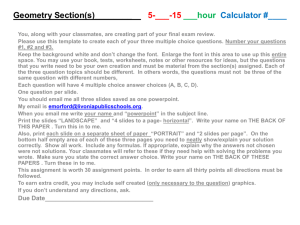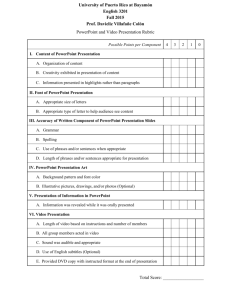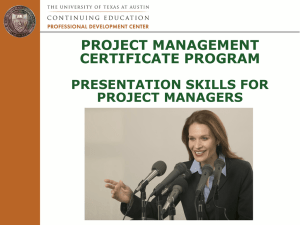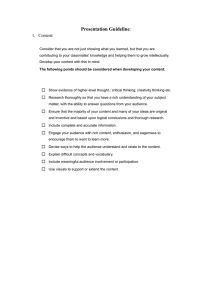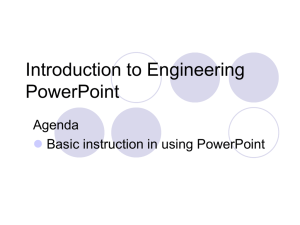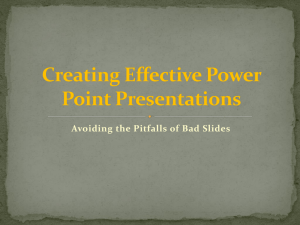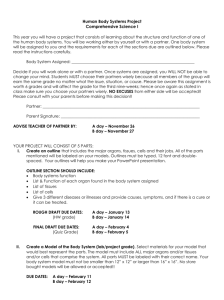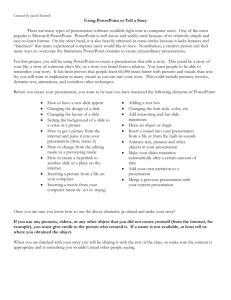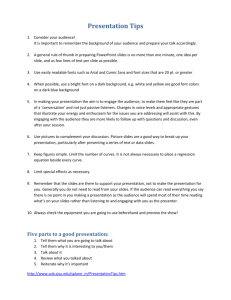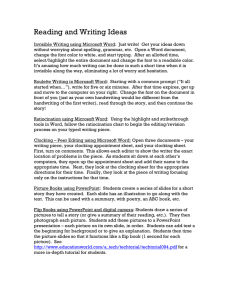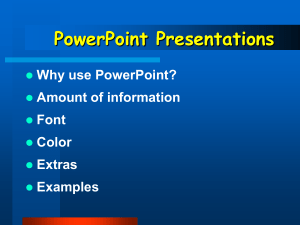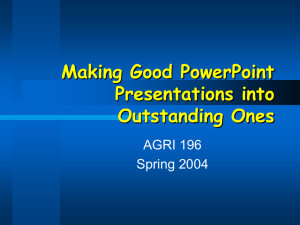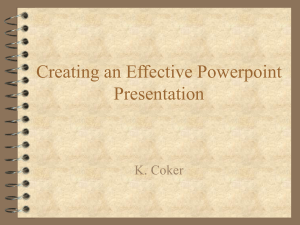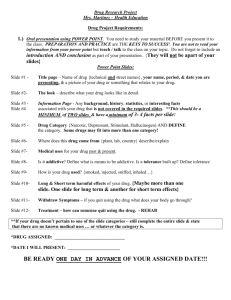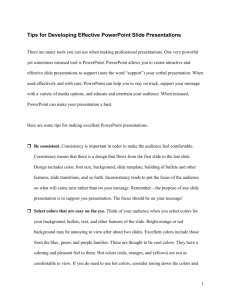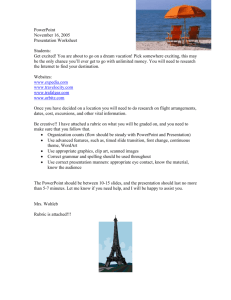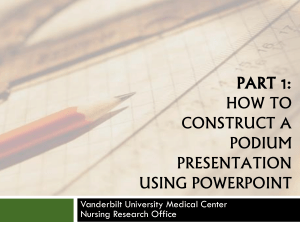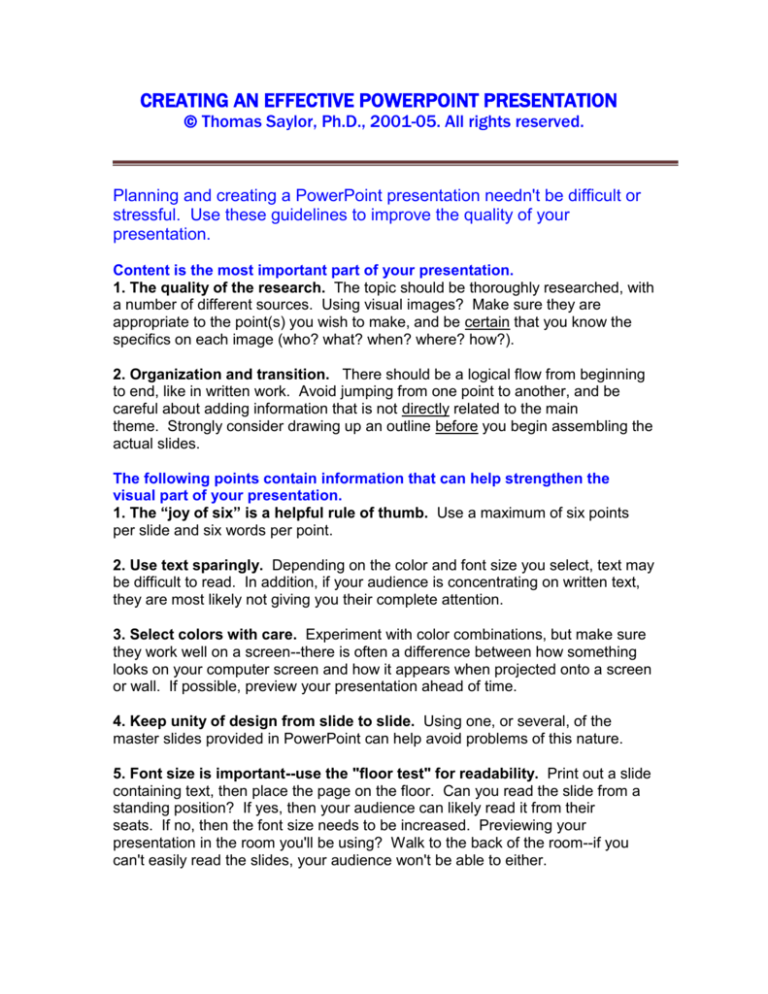
CREATING AN EFFECTIVE POWERPOINT PRESENTATION
© Thomas Saylor, Ph.D., 2001-05. All rights reserved.
Planning and creating a PowerPoint presentation needn't be difficult or
stressful. Use these guidelines to improve the quality of your
presentation.
Content is the most important part of your presentation.
1. The quality of the research. The topic should be thoroughly researched, with
a number of different sources. Using visual images? Make sure they are
appropriate to the point(s) you wish to make, and be certain that you know the
specifics on each image (who? what? when? where? how?).
2. Organization and transition. There should be a logical flow from beginning
to end, like in written work. Avoid jumping from one point to another, and be
careful about adding information that is not directly related to the main
theme. Strongly consider drawing up an outline before you begin assembling the
actual slides.
The following points contain information that can help strengthen the
visual part of your presentation.
1. The “joy of six” is a helpful rule of thumb. Use a maximum of six points
per slide and six words per point.
2. Use text sparingly. Depending on the color and font size you select, text may
be difficult to read. In addition, if your audience is concentrating on written text,
they are most likely not giving you their complete attention.
3. Select colors with care. Experiment with color combinations, but make sure
they work well on a screen--there is often a difference between how something
looks on your computer screen and how it appears when projected onto a screen
or wall. If possible, preview your presentation ahead of time.
4. Keep unity of design from slide to slide. Using one, or several, of the
master slides provided in PowerPoint can help avoid problems of this nature.
5. Font size is important--use the "floor test" for readability. Print out a slide
containing text, then place the page on the floor. Can you read the slide from a
standing position? If yes, then your audience can likely read it from their
seats. If no, then the font size needs to be increased. Previewing your
presentation in the room you'll be using? Walk to the back of the room--if you
can't easily read the slides, your audience won't be able to either.
6. Minimize or avoid animated texts, sounds, and fancy transitions. These
can be effective in certain situations, but often distract your audience from the
main points you are making.
7. Avoid switching between programs (such as calling up a Web
page). This takes extra time and can make it difficult for your audience to remain
focused on your presentation.
8. Do you want people to take notes during your presentation? Leave them
sufficient time to do so.
9. Timing. Use three slides per minute as a maximum.
10. Visual images can be great, but they need to be selected carefully and be
appropriate to the point(s) you want to make. Watch size, too--images too small
are not helpful. And if formatting visual images to fit a slide, be sure to keep the
dimensions of the original!
It's often helpful to keep these concepts in mind: FOCUS –
PLAN – PRACTICE
FOCUS on the main point(s) you want to make.
PLAN the layout of your presentation. This means carefully considering each
slide, as well as the presentation as a whole. Does everything fit together?
PRACTICE your entire presentation at least once before you present it to your
audience. Most helpful is projecting your presentation onto a screen, in order to
see exactly how your audience will view it. If possible, have someone watch and
listen, then ask questions about anything that they find unclear--rather face a
difficult question from one person than in front of an audience!
*Some language and concepts used here adopted from David G. Brown,
“Judicious PowerPoint,” in Syllabus 14, 8 (March 2001), 27.
The author: Thomas Saylor, Ph.D. is Associate Professor of History at
Concordia University, St. Paul (Minnesota/USA).


